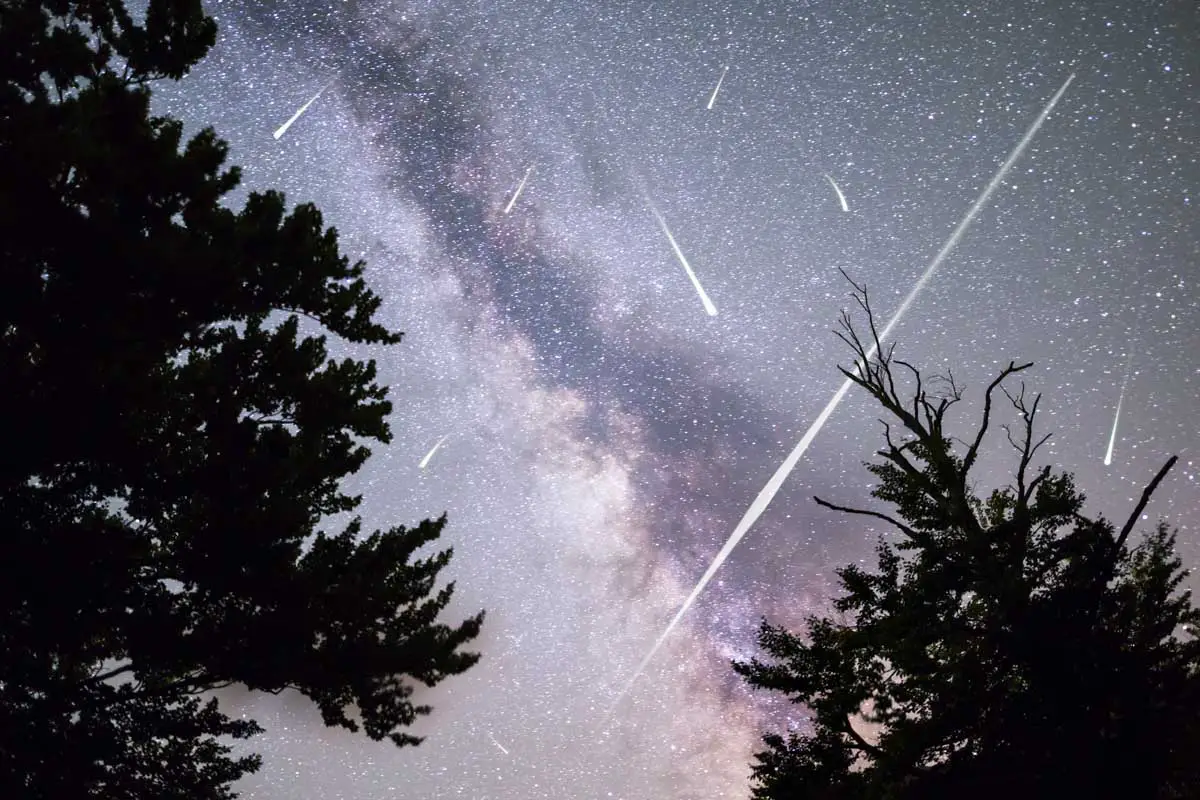
- This event has passed.
Quadrantids Meteor Shower 2025 – Southern California
January 2 - January 3

The Quadrantids meteor shower, one of the year’s most intense, will peak on the nights of January 2-3, 2025.
While the peak is relatively short-lived, it offers a spectacular celestial show, with the potential for up to 120 meteors per hour under ideal conditions. These meteors are known for their bright, colorful fireballs that can streak across the night sky.
Tips for Optimal Viewing:
- Find a Dark Spot: Head to a location away from city lights, such as a local mountain or desert area.
- Look Northeast: The radiant point of the shower, from which the meteors appear to originate, is in the northeastern sky. Lie flat on your back with your feet facing northeast and look up, taking in as much of the sky as possible
- Be Patient: Allow your eyes to adjust to the darkness for the best viewing experience.
With the moon in a favorable phase, this year’s Quadrantids shower promises to be a memorable event for Southern California skywatchers. So, bundle up, grab a blanket, and get ready to witness this celestial spectacle.
About the Meteor Shower
The Quadrantids, which peak during early-January each year, are considered to be one of the best annual meteor showers. Most meteor showers have a two-day peak, which makes catching sight of these other meteors much more possible. The Quadrantids peak, on the other hand, is much shorter – only a few hours. (The reason the peak is so short is due to the shower’s thin stream of particles and the fact that the Earth crosses the stream at a perpendicular angle.) During its peak, 60 to as many as 200 Quadrantid meteors can be seen per hour under perfect conditions.
Quadrantids are also known for their bright fireball meteors. Fireballs are larger explosions of light and color that can persist longer than an average meteor streak. This is due to the fact that fireballs originate from larger particles of material. Fireballs are also brighter, with magnitudes brighter than -3.
Where Do Meteors Come From?
Meteors come from leftover comet particles and bits from broken asteroids. When these objects come around the sun, the dust they emit gradually spreads into a dusty trail around their orbits. Every year the Earth passes through these debris trails, which allows the bits to collide with our atmosphere where they disintegrate to create fiery and colorful streaks in the sky.
